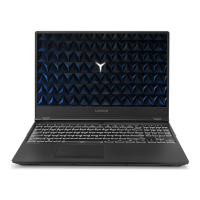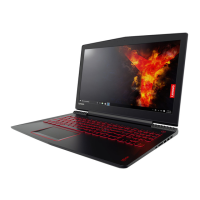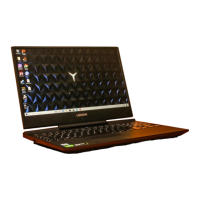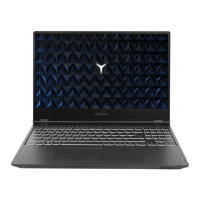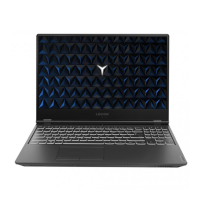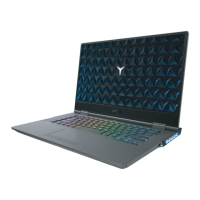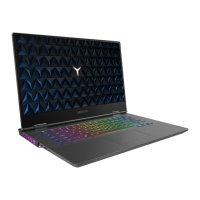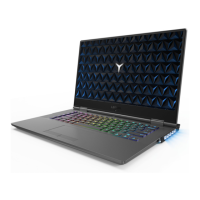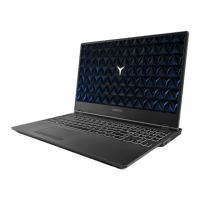
Do you have a question about the Lenovo Legion Y530 and is the answer not in the manual?
| Color name | Onyx Black |
|---|---|
| Form factor | Clamshell |
| Product type | Laptop |
| Product color | Black |
| Housing material | Acrylonitrile butadiene styrene (ABS), Polycarbonate (PC) |
| Display diagonal | 15.6 \ |
| Anti-glare screen | Yes |
| Display brightness | 300 cd/m² |
| Maximum refresh rate | 60 Hz |
| Keyboard layout | QWERTY |
| Pointing device | Touchpad |
| Keyboard language | English |
| Keyboard backlit color | White |
| Operating system language | Polish |
| Operating system architecture | 64-bit |
| Bus type | DMI |
| Processor cache | 9 MB |
| Processor cores | 6 |
| Processor model | i7-8750H |
| Processor family | Intel® Core™ i7 |
| Processor frequency | 2.2 GHz |
| Configurable TDP-down | 35 W |
| Processor manufacturer | Intel |
| Processor boost frequency | 4.1 GHz |
| Configurable TDP-down frequency | 1.7 GHz |
| Motherboard chipset | Intel® HM370 |
| Memory slots | 2x SO-DIMM |
| Internal memory | 8 GB |
| Memory channels | Dual-channel |
| Memory form factor | SO-DIMM |
| Internal memory type | DDR4-SDRAM |
| Maximum internal memory | 16 GB |
| SSD capacity | The Solid State Drive's storage capacity in Gigabytes. |
| SSD interface | M.2, NVMe, PCI Express 3.0 |
| Storage media | SSD |
| SSD form factor | M.2 |
| Total storage capacity | 256 GB |
| Number of SSDs installed | 1 |
| Battery capacity | 52.5 Wh |
| Battery life (max) | 9.5 h |
| AC adapter power | 135 W |
| Discrete graphics card model | NVIDIA® GeForce® GTX 1050 |
| On-board graphics card model | Not available |
| Discrete graphics card memory | 4 GB |
| Discrete graphics memory type | GDDR5 |
| Audio chip | Realtek ALC3240 |
| Audio system | Dolby Home Theater |
| Speaker power | 2 W |
| Number of microphones | 2 |
| Speakers manufacturer | Harman Kardon |
| Front camera resolution | 1270 x 720 pixels |
| Front camera resolution (numeric) | 1 MP |
| Bluetooth version | 4.1 |
| Top Wi-Fi standard | Wi-Fi 5 (802.11ac) |
| Ethernet LAN data rates | 100, 1000 Mbit/s |
| Sustainability certificates | ENERGY STAR, ErP, RoHS |
| Headphone outputs | 3.5 |
| USB 2.0 ports quantity | 0 |
| USB 3.2 Gen 1 (3.1 Gen 1) Type-A ports quantity | 3 |
| Intel Identity Protection Technology version | 1.00 |
| Intel Stable Image Platform Program (SIPP) version | 0.00 |
| Depth | 267 mm |
|---|---|
| Width | 360 mm |
| Height | 24.9 mm |
| Weight | 2300 g |
Describes the top view of the computer, detailing components like the display, camera, microphone, and keyboard.
Explains the numeric keypad and function key combinations for instant operational feature changes.
Details components on the left side, including ventilation slots, USB 3.1 port, and combo audio jack.
Describes components on the right side, such as USB 3.1 port, Novo button, and power status indicator.
Details the rear ports, including Type-C, DisplayPort, USB 3.1, HDMI, RJ-45, and AC power adapter jack.
Explains how to attach a Kensington lock to the security slot for physical security.
Describes the meaning of different indicator lights for battery charging status.
Guides users on connecting USB devices, including driver installation and safe removal procedures.
Explains how to connect the computer to an Ethernet network using a network cable.
Details the bottom view, including louvers for cooling and speakers for audio output.
Outlines the initial setup steps for Windows 10, including license agreement and user account creation.
Introduces the Windows 10 start menu and its components like the Settings, Power, Start, Search, and Task view buttons.
Explains how to access and use the Windows settings interface for basic tasks and customization.
Guides on how to customize the start menu by pinning favorite applications for easier access.
Instructions on how to put the computer into sleep mode or shut it down properly.
Details how to shut down the computer completely, via the start menu or by right-clicking the Start button.
Covers managing tasks and virtual desktops in Windows 10, including task view and virtual desktop creation.
Guides users on how to enable wireless functions and connect to available wireless networks.
Explains the 'Reset this PC' feature to restore the operating system to its original state.
Addresses common questions about finding information, warranty, and preinstalled OS/software.
Explains the BIOS setup utility, how to start it, and how to change boot modes.
Provides information on how to contact the customer support center for assistance.
Offers solutions for common display issues like a blank or distorted screen.
Addresses issues related to forgotten user or administrator passwords, and hard disk passwords.
Provides troubleshooting steps for issues related to the computer entering sleep mode or not returning from it.
Offers solutions for display panel issues such as unreadable or distorted screens, and incorrect characters.
Troubleshoots issues where no sound is heard from the speakers, even with the volume up.
Addresses problems related to the battery shutting down the computer unexpectedly or not operating correctly.
Guides on troubleshooting when the hard disk drive is not functioning properly.
Covers miscellaneous issues like the computer not responding, not starting from a device, or external devices not working.
